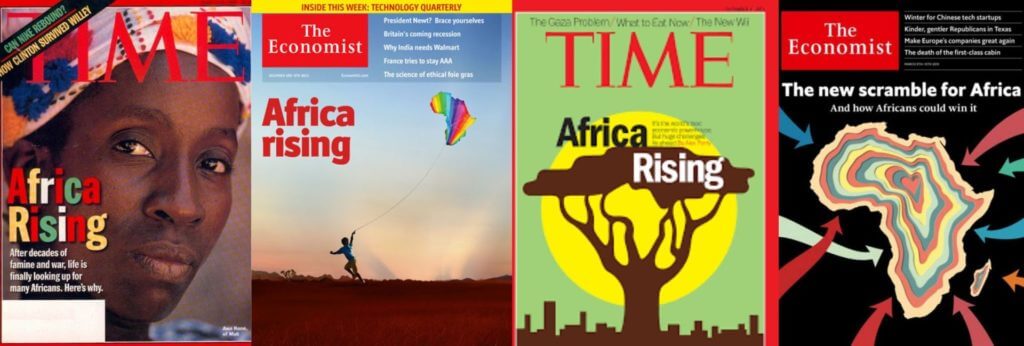The Silent Revolution: How the Global South Is Reshaping the World Economy
For decades, the global economic conversation was dominated by a rigid dichotomy—developed versus developing, First World versus Third World. But that framing has become outdated, even misleading. The world has changed. Quietly, steadily, and profoundly. A seismic shift has occurred across the Global South that few in the West truly grasp: what happened in China did not stay in China. A similar economic miracle has been unfolding across large swaths of Asia, Africa, and Latin America—simultaneously.
From Poverty to Possibility
In 1980, most of the Global South was written off as “poor,” “undeveloped,” or “low-potential.” But in the decades since, countries once dismissed as economic backwaters have become hubs of manufacturing, innovation, digital leapfrogging, and demographic dynamism.
Take Vietnam. Once synonymous with war and poverty, it is now a critical node in the global supply chain, attracting tech giants and boasting high-speed growth. Or consider Bangladesh, home to one of the world’s most competitive garment industries and a rapidly digitizing economy. Ethiopia, once symbolic of famine, was—before recent political instability—growing faster than almost any country in the world.
The result? A tectonic expansion of the global middle class, much of it concentrated in the South. Billions have been lifted out of poverty, and millions now participate in global trade, mobile banking, and online education. The old narrative of the “Third World” no longer holds.
China Was Just the Beginning
China’s rise—lifting 800 million people out of poverty and becoming the world’s second-largest economy—was historic. But what’s equally historic is that China was not alone.
India, with its IT revolution and digital public infrastructure, is now shaping the future of financial inclusion, digital identity, and public services. Indonesia has become Southeast Asia’s tech powerhouse. Brazil’s agri-tech sector is world-class. Even small economies like Rwanda are earning reputations for innovation and governance reform.
We are witnessing a “China-sized” transformation happening simultaneously in multiple regions, though in different forms. Some are driven by manufacturing, others by services, mobile technology, or even green energy. But the trajectory is clear: economic acceleration is no longer the privilege of the West or the East Asian Tigers alone.
Leapfrogging the Old World
Perhaps most striking is how the Global South is bypassing legacy systems entirely. In parts of Africa, mobile money outpaces traditional banking. In India, digital payments are more widespread than in many Western countries. Education, healthcare, and government services are being reimagined through frugal innovation and mobile-first platforms.
This isn’t about playing catch-up. It’s about leapfrogging—skipping industrial-age infrastructure and jumping straight into the digital and post-digital age.
The New Center of Gravity
The implications are enormous. The Global South is no longer the periphery—it’s fast becoming the center. It’s where the consumers, workers, and innovators of the 21st century are emerging. It’s where the next unicorns will rise and where global growth will be concentrated for the foreseeable future.
Geopolitically, this rebalancing of economic power is already influencing trade patterns, diplomatic alignments, and multilateral institutions. The South is no longer begging for aid—it is demanding investment, partnership, and respect.
Conclusion: The World Has Changed—Have We Noticed?
The world we live in today is not the world of the Cold War era, nor even the post-9/11 world of the 2000s. It is a world shaped by the rise of the Rest. The "Third World" no longer exists—what exists is a vibrant, diverse, and upwardly mobile Global South.
It’s time we retire outdated mental maps and recognize the reality: the future is being built everywhere. And more often than not, it’s being built in places that were once ignored. The question is not whether the Global South will rise. It already has. The question is whether the world is ready to accept and adapt to this new reality.
One quarter of all startups with billion-dollar valuations have a founder who came here on a student visa. If we had eliminated student visas, Elon Musk would never have started Tesla and SpaceX. The gains to the U.S. from welcoming foreign students are immense. pic.twitter.com/B96LdkpOBU
— James Surowiecki (@JamesSurowiecki) May 24, 2025
Great. All 3rd worlders can go back to the 3rd world and help make it great.
— Zander (@zanderevropa) May 24, 2025
Then don't block immigration.
— Paramendra Kumar Bhagat (@paramendra) May 24, 2025
The Silent Revolution: How the Global South Is Reshaping the World Economy https://t.co/3lZVWXVdZe
— Paramendra Kumar Bhagat (@paramendra) May 24, 2025
Please specify what you are referring to. With links if possible.
— Paramendra Kumar Bhagat (@paramendra) May 24, 2025
Something extraordinary is happening in Eastern Europe: Poland is on track to overtake Japan in GDP per capita by 2026.
— Ask Perplexity (@AskPerplexity) May 24, 2025
Here's the full story of how Poland emerged from Soviet communism as one of Europe's poorest nations to now surpassing the world's former economic powerhouse. pic.twitter.com/kuzJbIM9Fm
Trump's assault on foreign students at Harvard is truly depraved. It harms thousands of the smartest people in the country for no reason, & it's based on the error of thinking they're behind campus "riots" (a cable news host said this to me last night). In fact disruptive…
— Steven Pinker (@sapinker) May 24, 2025
Some friends in IT fear AI and want to reskill by taking a 2 lakh rupee AI course.
— Dharmesh Ba (@dharmeshba) May 24, 2025
It's funny that they're willing to spend so much on a certificate but not $20 for a ChatGPT subscription to explore LLMs.



No comments:
Post a Comment